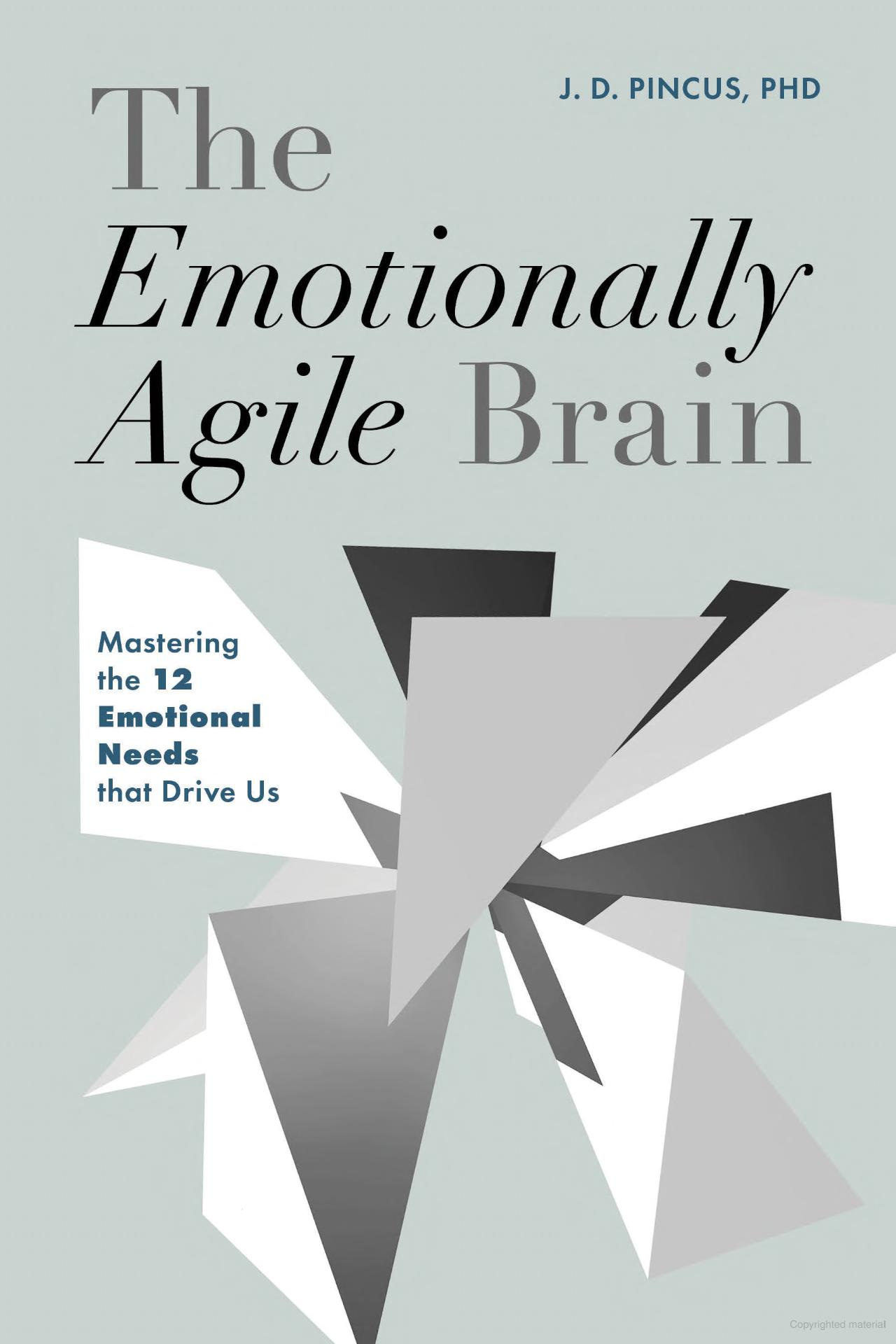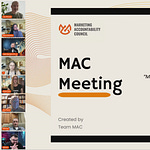By the time JD Pincus sat down for this interview, he already knew the assignment:
We wouldn’t pretend things were fine.
Not in marketing.
Not in mental health.
Not in the world.
We opened the call like two people who’ve lived in the eye of the storm, me chasing marketing reform, him decoding what drives human behavior. And before we even hit record, JD dropped this:
“I just want people to see that this isn’t theory. This is usable. And it matters now more than ever.”
He's right. It does.
Because if you’re in marketing, coaching, therapy, leadership, or just surviving 2025, you’ve felt it: the strategies aren’t sticking. The messages are falling flat. We’re performing relevance instead of earning trust. And no amount of optimization is fixing that.
But JD Pincus might have a roadmap. It starts with one truth:
People are driven by unmet emotional needs, and most systems pretend otherwise.
"Why Now?"
JD isn’t another self-appointed marketing messiah. He’s a Ph.D. researcher, a marketing veteran, an “anti-guru.”
He’s spent decades deep in the machinery of branding, market research, and psychology. And he’s seen the same problem repeat:
“We’re making decisions based on what people say they want. But they don’t actually know.”
That’s not just an opinion. JD ran a massive meta-analysis of over 100 motivation and emotion theories, from Maslow to McClelland to Damasio, to build something that doesn’t reduce people to personality types or mood checklists.
He calls it AgileBrain. It’s not another assessment. It’s a system that bypasses people’s stories and talks to their subconscious instead.
The Emotional Truth Behind the Curtain
AgileBrain rapidly shows people a series of positive and negative images. Users react viscerally, clicking the ones that feel most aligned. The tool then decodes those reactions into 12 emotional needs across material, social, spiritual, and self domains.
“We’re not measuring personality. We’re mapping motivation. And that changes everything.”
These aren’t abstract insights. They’re actionable data. And they help people figure out what they actually need right now, to feel more whole, more grounded, more themselves.
“People don’t realize how much internal conflict they carry. Until they see it laid out in front of them.”
It’s fast.
It’s ungameable.
And it’s doing what most surveys and focus groups fail to do: tell the emotional truth.
What Marketing Gets Wrong And What AgileBrain Gets Right
JD’s not here to throw shade. But he is here to burn down the delusions. And in this interview, he didn’t hold back.
“Marketers love to tell stories about themselves. They brand things to death. But they rarely ask: ‘What emotional need are we serving?’”
He told us about an ad campaign that tried to unify a neighborhood with blue paint, a thinly veiled brand stunt that screamed conformity more than community.
It backfired. And AgileBrain caught it in the data.
Because that’s what JD’s model does: it shows whether your message hits a need or strokes your brand ego.
“If you’re not solving for emotional truth, you’re probably just wasting money.”
This resonates deeply with what we’re doing at the Marketing Accountability Council (MAC). The MAC Stack is designed to help marketers cut through the BS, test their ideas, and build with empathy. JD’s work fits right in.
Introducing The MAC Stack
Let’s be honest: marketing doesn’t need more frameworks that sound good in theory and vanish in execution. It needs tools that hold up under pressure. Standards that match our values. Language that cuts through the noise.
His framework is like a diagnostic engine for everything we’re trying to stress-test through the MAC Heuristics Project, the Delusion Series, and the upcoming TRUST Framework.
In Progress: Aligning Founder Vision with Market Emotion Using AgileBrain
We’re working with a founder who’s not just building a product, they’re rewriting the rules of an entire category. It’s premium. It’s innovative. It doesn’t play by legacy expectations. And because of that, it can’t rely on legacy marketing playbooks either.
Step 1: Start with the Founder
Before we even touched customer personas or channels, we ran an AgileBrain diagnostic on the founder. This neuroscience-based tool helps uncover emotional clarity—what’s driving the decisions behind the business, and what tensions might be under the surface.
What we uncovered:
High purpose, low ego.
Deep commitment to autonomy and craft.
Strong internal compass—but a desire to connect it to something larger.
That emotional profile became our strategic foundation. Not just who the brand is, but how it needs to feel in-market.
Step 2: What Comes Next – Customer Truth, Not Customer Theater
The next move is extending AgileBrain to a hand-picked group of early adopters. We’re not looking for opinions, we’re looking for emotional resonance, gut-level instinct. Honest signal.
Here’s the plan:
A small cohort (8–10 people) runs through the same AgileBrain diagnostic, adapted for product perception, pricing response, and brand storytelling.
We gather data on what’s clicking, what’s confusing, and what’s missing—not from what they say, but how they feel.
This step will help us answer:
Is the price point aspirational or alienating?
What’s the emotional hook—craftsmanship, disruption, purpose?
How does the brand’s story stack up emotionally against category giants?
Why It Matters
Traditional validation methods fall flat when you’re building something people haven’t seen before. AgileBrain lets you test emotional fit before you spend a dime on positioning, creative, or channels.
You’re not just finding your audience. You’re tuning your message to the frequency they already operate on.
A System Built for Complexity, Not Simplicity
JD isn’t chasing the next “one big idea.” That’s part of the problem.
“Life doesn’t boil down to grit. Or willpower. Or mindset. It’s 12 interlocking emotional needs. Ignore any of them, and you’re out of balance.”
He explained how a wildfire doesn’t just threaten your home. It destabilizes your sense of safety, autonomy, belonging, and even your sense of purpose. Understanding that multidimensional suffering helps people recover and helps organizations respond with real empathy.
In other words, you can’t fix emotional damage with rational messaging.
Real Stats, Real Stakes
This isn’t just theory. Here’s what JD’s work shows:
In a study of 18,000+ AgileBrain responses, the system predicted employee turnover with over 80% accuracy, without asking a single question about intent.
Correlation between AgileBrain’s activation scores and clinical depression/anxiety scales was over 0.9, but without using any sensitive language.
As of 2025, 76% of Americans report feeling emotionally disconnected from their jobs. JD's work helps explain why and what to do about it.
These are survival signals in a world where burnout, disengagement, and brand fatigue are skyrocketing.
Who This Is For (Spoiler: It’s Everyone)
AgileBrain isn’t just for marketers. Therapists, coaches, educators, and even public health professionals use it from rural Nigeria to post-invasion Kyiv.
“What we built isn’t just a tool. It’s a mirror. It shows you what you actually need. And if you’re willing to look, it can change your life.”
As a parent of a neurodivergent kid with ADHD, I’ve spent years trying to understand how emotion, behavior, and attention work. So when JD and I started digging into emotional profiles and instinctive decision-making, it wasn’t just a marketing exercise; it hit home.
This work doesn’t live in just one domain. Whether you’re shaping a brand, leading a team, or raising a kid who sees the world differently, understanding how people feel—not just what they say—is everything.
That’s why this conversation mattered. And why I leaned in.
“Autism and ADHD profiles are almost opposite. But they co-occur. And if you don’t understand that, you’re going to miss what your kid actually needs.”
To that end, I’ve got to say, I’m incredibly proud of my son, Gavin. He’s taken his own neurodivergent experience and started sharing his perspective through his own Substack.
If you’re curious about how the next generation is processing the world around them, especially through a different lens, I’d love for you to check it out. He’s finding his voice, and it’s one worth hearing.
What We’re Building Together
At MAC, we’ve said it a thousand times: good marketing doesn’t come from clever. It comes from clarity, empathy, and accountability.
What JD Pincus has built with AgileBrain is more than a model. It’s challenging for our industry to stop guessing what people want and learn.
“You can’t build trust without understanding. You can’t build loyalty without relevance. And you sure as hell can’t build a brand without meeting a real need.”
On May 6, JD is asking people to buy his book, The Emotionally Agile Brain, not because he wants to make money—he won’t—but because it deserves to be seen.
Buy it. Read it. Then build from it.
Start by taking the free, 3-minute AgileBrain.
It’s fast, accurate, and surprisingly revealing.
Then grab the book on Amazon today, May 6:
Hardcover: Buy on Amazon
Kindle: Buy on Amazon
And if you want to hear J.D. unpack the big ideas live, register here for the book discussion:
Live Book Talk with J.D. Pincus
This isn’t about buzzwords or gimmicks. It’s about understanding what you need and what to do about it.

















Share this post